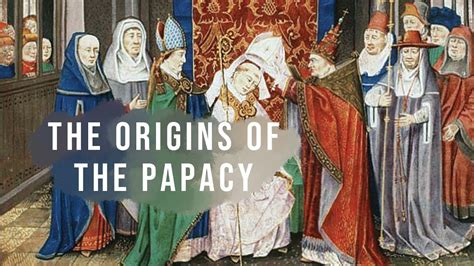The High Renaissance was a period of significant change and upheaval for the Catholic Church. The papacy, which had long been the dominant force in European Christianity, found itself facing a number of challenges, both from within and without.

Internal Challenges
One of the most significant challenges facing the papacy during the High Renaissance was the rise of humanism. Humanism was a intellectual movement that emphasized the importance of human reason and experience over traditional religious dogma. Humanist scholars began to question the authority of the Church and its teachings, and they promoted a more secular view of the world.
Another challenge facing the papacy was the rise of Protestantism. Protestantism was a religious movement that began in the early 16th century with the teachings of Martin Luther. Luther and other Protestant reformers argued that the Catholic Church had become corrupt and that it had strayed from the true teachings of Jesus Christ. Protestantism quickly spread throughout Europe, and it posed a serious threat to the authority of the papacy.
External Challenges
In addition to the internal challenges it faced, the papacy also faced a number of external challenges during the High Renaissance. One of the most significant of these challenges was the rise of nation-states. Nation-states were political entities that were based on a shared language, culture, and history. As nation-states became more powerful, they began to challenge the authority of the papacy in their own territories.
Another external challenge facing the papacy was the rise of the Ottoman Empire. The Ottoman Empire was a Muslim empire that conquered large parts of southeastern Europe and the Middle East. The Ottoman Empire posed a threat to the security of the papacy and its territories.
The Response of the Papacy
The papacy responded to the challenges it faced during the High Renaissance in a number of ways. One of the most significant responses was the Counter-Reformation. The Counter-Reformation was a movement within the Catholic Church that was designed to combat the spread of Protestantism. The Counter-Reformation included a number of measures, such as the establishment of the Inquisition, the Index of Forbidden Books, and the Council of Trent.
The papacy also responded to the challenges it faced by promoting the arts and sciences. The High Renaissance was a period of great artistic and intellectual achievement, and the papacy played a major role in supporting this achievement. Popes such as Julius II and Leo X were patrons of the arts and sciences, and they commissioned some of the greatest works of art and literature of the period.
The Legacy of the Papacy
The papacy’s behavior during the High Renaissance had a lasting impact on the Catholic Church and on Western civilization as a whole. The Counter-Reformation helped to preserve the authority of the papacy and to prevent the spread of Protestantism. The papacy’s patronage of the arts and sciences helped to create a lasting legacy of artistic and intellectual achievement.
However, the papacy’s response to the challenges it faced also had some negative consequences. The Counter-Reformation led to a period of religious persecution and intolerance. The papacy’s support for the arts and sciences helped to create a climate of opulence and extravagance that some critics argued was incompatible with the teachings of Jesus Christ.
Overall, the papacy’s behavior during the High Renaissance was a complex and contradictory one. The papacy faced a number of significant challenges, and it responded to these challenges in a variety of ways. The papacy’s response had both positive and negative consequences, and it left a lasting impact on the Catholic Church and on Western civilization as a whole.
Conclusion
The High Renaissance was a period of significant change and upheaval for the papacy. The papacy faced a number of challenges, both from within and without, and it responded to these challenges in a variety of ways. The papacy’s response had both positive and negative consequences, and it left a lasting impact on the Catholic Church and on Western civilization as a whole.
FAQs
- What were the main challenges facing the papacy during the High Renaissance?
- How did the papacy respond to the challenges it faced?
- What were the positive and negative consequences of the papacy’s response?
- What is the legacy of the papacy’s behavior during the High Renaissance?
- What are some examples of the art and literature that was produced during the High Renaissance?
- How did the papacy’s patronage of the arts and sciences contribute to the development of Western civilization?
- What are some of the criticisms that have been leveled against the papacy’s behavior during the High Renaissance?
- How does the papacy’s behavior during the High Renaissance compare to its behavior in other periods of history?
